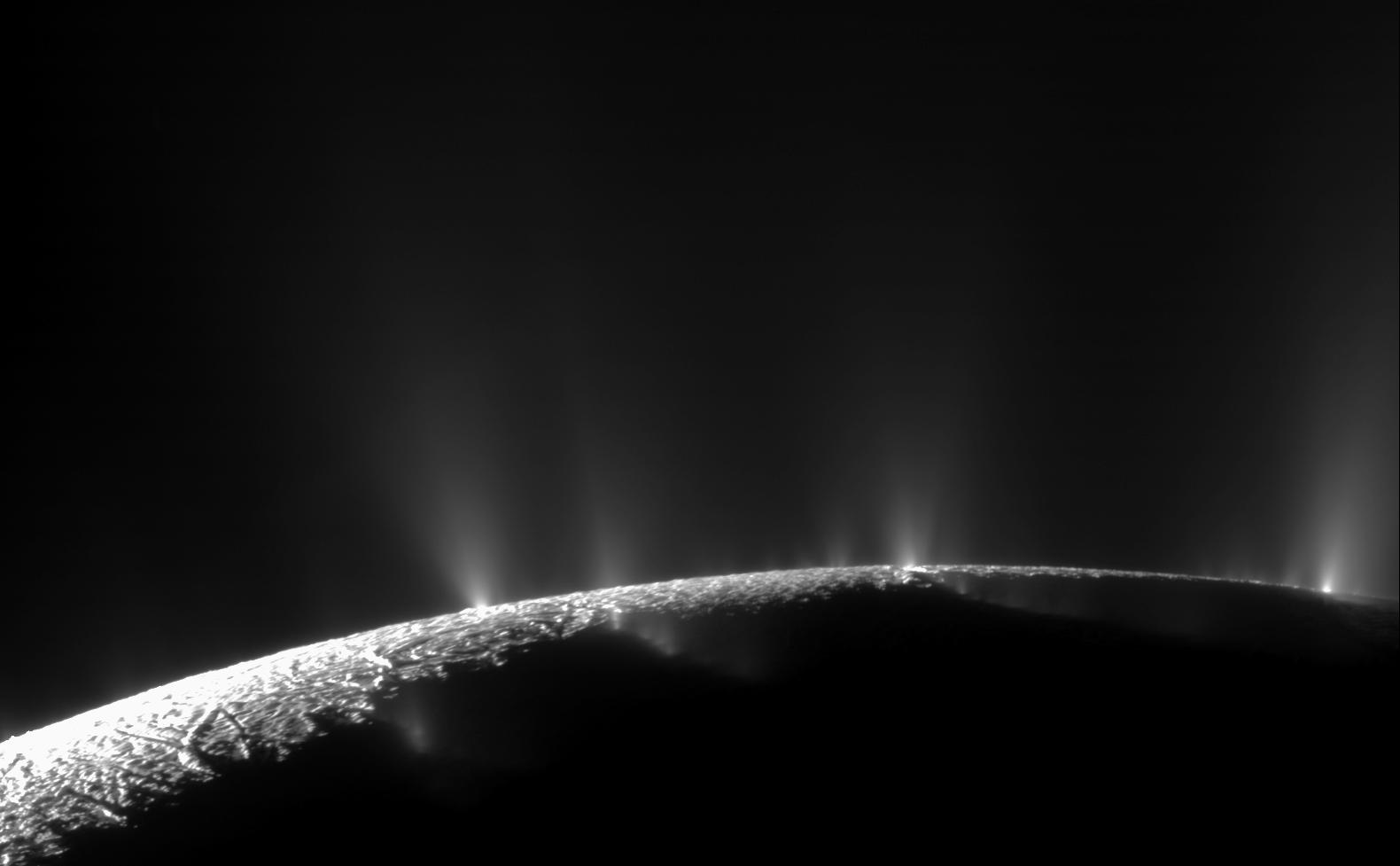5 min read
Todd J. Barber, Cassini lead propulsion engineer
Happy Holidays from the Cassini flight team! I often use December’s column to reflect on the science highlights of the past year, but in the spirit of the forward-looking Cassini Solstice Mission, I thought I would set the stage for a busy and exciting 2011 for our intrepid explorer at Saturn.

On January 11, Cassini will encounter the icy moon Rhea for the third time, with closest approach only about 76 kilometers (47 miles) above the surface. Rhea only has about 1/40th of the volume of Titan, but that’s still enough to make it the second largest Saturnian moon. This flyby will include investigations of the environment, structure, and activity around this icy satellite. February will bring Cassini back to Titan for the T-74 flyby at an altitude of 3,651 kilometers, or 2,268 miles. The Cassini plasma spectrometer (CAPS) will be prime, observing plasma interactions at Titan, though there will also be radio science observations helping scientists pin down Titan’s interior structure, including the possibility of a subsurface liquid ocean.
I know the flight team is looking forward to a little break in March, especially after the frenzied schedule of satellite flybys over the last few months through the first two months of 2011. After this break, though, it is back to work with another Titan flyby (T-75) on April 19, this time just above 10,000 kilometers (6,200 miles). The ultraviolet imaging spectrograph (UVIS) will observe Titan’s atmosphere, providing information on the chemistry and scattering properties of constituent gases and hazes. This work represents a continuation of prior Titan encounter observations so that temporal variations may be charted. Just a few weeks later, on May 8, we will execute T-76, this time at an altitude of only 1,873 kilometers (1,164 miles). Our visual and infrared mapping spectrometer (VIMS) will be prime for this flyby; it will image Adiri, a large and bright albedo feature which appears to be a highland area covered in drainage channels. In fact, ESA’s Huygens probe landed near the “coastline” of Adiri nearly six years ago during its highly successful reconnaissance of Titan. VIMS will also image clouds on Titan, looking for changes in extent after the recent Saturnian equinox.
June 20 will see another Titan flyby; T-77 will be around 1,359 kilometers (only 844 miles) in altitude and the radar instrument will be front and center. Scatterometry, altimetry over the bright continent-like feature Xanadu, and synthetic aperture radar (SAR) imaging of northern Xanadu and Fensal are planned. Fortuitously, the planets (or moons, I guess) aligned to allow us some summer vacation next year, but we will begin again in earnest on Sept. 12 with the T-78 flyby at a closest approach distance of 5,821 km (3,617 miles). T-78 is highlighted by a UVIS stellar occultation, one of the best ways to probe the constituents of Titan’s rich organic soup of an atmosphere. Essentially, UVIS can investigate the way distant starlight is modified as it passes through Titan’s atmosphere on the way to the spacecraft. Detailed profiles of nitrogen, hydrogen cyanide, hydrocarbon, and aerosol abundances will be obtained as a function of Titan altitude.
The year closes out with a spate of icy satellite flybys, including three Enceladus flybys in October and November. E-14 will take place on the first day of October at an altitude of only 99 kilometers (62 miles) to perform a close south polar study of the properties of the particles in the plume of this intriguing moon of Saturn to make direct measurements of the intriguing cryovolcanic plume. A mere eighteen days later, we will revisit Enceladus at E-15, but this time at 1,231 kilometers (765 miles). The highlight of this flyby is a double stellar occultation using the ultraviolet imaging spectrograph (UVIS), to make sensitive density and compositional measurements of the plume. Again, in another eighteen days, we will encounter Enceladus for the last time in 2011 at E-16, about 496 kilometers (308 miles) from the surface to get the first detailed study of the radar properties of the moon. Finally, as if the holiday season weren’t busy enough, we’re actually planning a double flyby in December of 2011, with our third encounter of icy Dione (D-3) on Dec. 12 followed one day later by the T-79 flyby. These two encounters will take Cassini within 99 kilometers (62 miles) and 3,586 (2,228 miles) of Dione and Titan, respectively. At Dione, the flyby will focus on interior structure studies using the radio science subsystem (RSS) along with fields-and-particles instruments sensing the environment around this interesting moon. And, lest we rest on our laurels, one year from now after a busy and productive year, the T-80 flyby awaits us on the second day of 2012!
We clearly have our work cut out for us next year, so I’ll take this opportunity to pause, take a breath, and thank you for your tireless support to the Cassini mission and flight team. It is an honor and privilege exploring the ringed planet and its moons on your behalf, and we wish you every happiness this holiday season.







